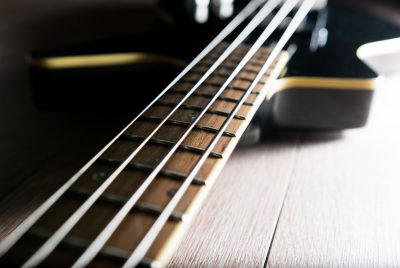Bass Guitar Techniques: Elevate Your Playing
As a passionate bass guitarist, I understand the importance of mastering various techniques to enhance your bass playing skills. In this article, I will guide you through a range of techniques, from essential basics for beginners to advanced methods that will take your bass guitar prowess to new heights. Whether you’re a novice or an experienced player, these techniques will unlock your musical potential and provide a solid foundation for your bass guitar journey.
Importance of Bass Guitar Techniques
Mastering bass guitar techniques is crucial for any bassist looking to excel and stand out in the world of music. These techniques not only improve your overall playing ability but also allow you to express yourself creatively and add depth to your basslines. By incorporating different techniques into your repertoire, you’ll be able to create captivating basslines, perform impressive solos, and contribute to the rhythm and groove of any musical ensemble.
Essential Techniques for Beginner Bassists
For beginners, acquiring a strong foundation in fundamental techniques is key. These techniques form the building blocks for your future growth as a bass player. Here are some essential techniques to focus on:
1. Proper Finger Placement and Hand Positioning
Establishing correct finger placement and hand positioning from the start is vital for developing good technique. Ensure that your fingers are aligned over the appropriate frets and that your thumb supports the back of the neck for optimal control and accuracy.
2. Playing with Proper Technique: Plucking and Fretting
Learn the basics of plucking (using your fingers or a pick) and fretting notes with precision and clarity. Focus on maintaining consistent tone and volume, and develop a relaxed and fluid motion in your plucking hand.
3. Basic Music Theory and Note Recognition
Understanding basic music theory and note recognition is essential for effective bass playing. Learn to identify and locate notes on the fretboard, as well as understand scales, intervals, and chord progressions.
4. Developing a Solid Sense of Rhythm
Bass guitar is all about providing a solid rhythmic foundation. Practice playing along with a metronome or drum tracks to develop a strong sense of timing and groove. Pay attention to subdivisions, syncopation, and playing in different time signatures.
5. Effective String and Note Transitions
Smooth transitions between strings and notes are crucial for fluid bass playing. Practice shifting positions on the fretboard and transitioning between strings seamlessly to ensure a connected and cohesive sound.

Advanced Techniques to Elevate Your Bass Playing
Once you have mastered the basics, it’s time to explore advanced techniques that will elevate your bass playing to the next level. These techniques will add flair, complexity, and versatility to your basslines. Let’s dive into some of them:
Slap and Pop Technique: Adding Funk and Groove
The slap and pop technique is synonymous with funk and groove. Mastering this technique involves using your thumb to slap the strings and your fingers to pop or pluck the strings. Experiment with different slapping and popping patterns, incorporate ghost notes, and explore syncopated rhythms to create infectious basslines that make people move.
Tapping: Expanding Your Musical Horizons
Tapping involves using both hands to tap the strings and produce notes. It allows you to play rapid-fire melodies, arpeggios, and chords with incredible speed and precision. Experiment with two-handed tapping techniques, explore tapping across different positions on the fretboard, and combine tapping with other techniques for a unique and dazzling bass performance.
Fingerstyle Technique: Creating Rich and Melodic Basslines
The fingerstyle technique involves plucking the strings with your fingers, usually the index and middle fingers. This technique allows for greater control, dynamics, and the ability to play intricate melodies and chordal arrangements. Practice alternate finger plucking, explore fingerstyle patterns, and experiment with combining fingerstyle and slap techniques to add depth and richness to your basslines.
Playing with a Pick: Unleashing Power and Precision
Using a pick (plectrum) can provide a different tone and attack to your bass playing. It’s particularly useful when you want to achieve a more aggressive and defined sound. Practice alternate picking, experiment with different pick thicknesses and materials, and explore hybrid picking (using a combination of fingers and pick) for a versatile and unique sound.
Developing a Strong Sense of Rhythm
Building upon the foundation of rhythm, focus on developing a strong sense of groove and syncopation. Experiment with different rhythmic patterns, accents, and subdivisions. Learn how to lock in with the drummer, anticipate chord changes, and create rhythmic variations to add interest and complexity to your basslines.
Articulation Bass Guitar Techniques: Hammer-ons, Pull-offs, and Slides
Articulation techniques such as hammer-ons, pull-offs, and slides can add expressiveness and fluidity to your bass playing. Practice executing clean and precise hammer-ons and pull-offs to create legato passages. Experiment with slides to connect notes smoothly and add a touch of soulful expression to your basslines.
Harmonics: Unlocking Harmonic Tones on Your Bass
Harmonics produce shimmering, bell-like tones on the bass guitar. Learn how to execute natural harmonics, pinch harmonics, and artificial harmonics. Experiment with using harmonics as embellishments, chordal accents, and melodic highlights to add texture and color to your basslines.
Understanding Chord Progressions and Arpeggios
Deepen your understanding of chord progressions and arpeggios to complement the harmony of a song. Learn common chord progressions and their corresponding arpeggios. Practice playing arpeggios smoothly across the fretboard and experiment with different inversions and voicings.
Navigating Challenging Time Signatures
Challenge yourself by exploring basslines in complex time signatures. Practice playing in odd meters such as 5/4, 7/8, or even polyrhythms. Develop your ability to count and feel different time signatures, ensuring that your basslines remain solid and groovy, regardless of the rhythmic complexity.
Bass Guitar Effects and Pedals: Enhancing Your Sound
Experiment with various bass guitar effects and pedals to sculpt your desired tone. Explore effects such as distortion, compression, modulation, and delay to add depth and texture to your bass sound. Experiment with different pedal combinations and settings to create unique sonic landscapes that enhance your playing style and musical expression.

Tips for Practicing and Incorporating Techniques into Your Playing
Practicing and incorporating these techniques into your playing requires dedication and consistency. Here are some tips to help you make the most of your practice sessions and seamlessly integrate these techniques into your bass playing:
Start Slow
Begin by practicing the techniques at a slower tempo, focusing on accuracy and clarity. Gradually increase the speed as you become more comfortable and confident.
Break it Down
If a technique feels challenging, break it down into smaller components and practice each part separately. Once you’ve mastered the individual elements, gradually piece them together.
Consistent Practice
Dedicate regular practice time to these techniques. Even short, focused practice sessions can yield significant results over time. Remember, consistency is key.
Jam with Others
Find opportunities to jam with other musicians, whether in a band setting or informal jam sessions. Collaborating with others will push you to apply the techniques in real-time and improve your ability to play in sync with others.
Record Yourself
Record your practice sessions or performances. Listening back to your playing will help you identify areas for improvement, track your progress, and gain valuable insights into your technique and musicality.
Explore Different Genres
Experiment with applying these techniques to different genres of music. Each genre presents unique opportunities and challenges that will expand your musical horizons and versatility as a bass player.
Remember, mastering bass guitar techniques is an ongoing journey. Embrace the process, be patient with yourself, and enjoy the exploration of new sounds and possibilities on your bass guitar.
Conclusion
By incorporating a variety of bass guitar techniques into your playing, you can elevate your skills, expand your musical vocabulary, and add depth and creativity to your basslines. From fundamental techniques for beginners to advanced methods for seasoned players, each technique opens doors to new sonic possibilities.
Embrace the challenge of mastering these techniques, practice consistently, and integrate them into your musical repertoire. As you continue to develop your skills, you’ll find your playing becoming more expressive, dynamic, and captivating. So, grab your bass, dive into the world of bass guitar techniques, and unleash your musical potential!
FAQs
Q1: Are these techniques suitable for both electric and acoustic bass guitars?
Yes, these techniques can be applied to both electric and acoustic bass guitars. However, some techniques, such as slap and pop, may be more commonly associated with electric bass playing.
Q2: How long does it take to master these techniques?
The time it takes to master these techniques varies from person to person. It depends on factors such as your current skill level, the amount of practice time you dedicate, and your learning style. Consistent practice and patience are key to mastering these techniques over time.
Q3: Can I incorporate these techniques into any style of music?
Absolutely! These techniques can be applied to various musical styles, including rock, jazz, funk, blues, and more. Adapt the techniques to suit the genre and musical context you’re playing in.
Q4: Do I need special equipment or gear to practice these techniques?
For most techniques, standard bass guitar equipment is sufficient. However, certain effects pedals or gear may be useful for exploring specific sounds or tones associated with some techniques. Experimentation with different equipment can add new dimensions to your playing.
Q5: Can I learn these techniques on my own, or should I seek a teacher?
You can certainly learn these techniques on your own through online resources, instructional books, and videos. However, having a bass teacher or mentor can greatly accelerate your learning process. A teacher can provide personalized guidance, correct any technical mistakes, and offer valuable insights based on their experience. Additionally, they can help you stay motivated and provide structured lessons tailored to your specific needs and goals.
Remember, whether you choose to learn on your own or with a teacher, a combination of self-discipline, consistent practice, and a passion for learning will ultimately determine your progress as a bass guitarist.




